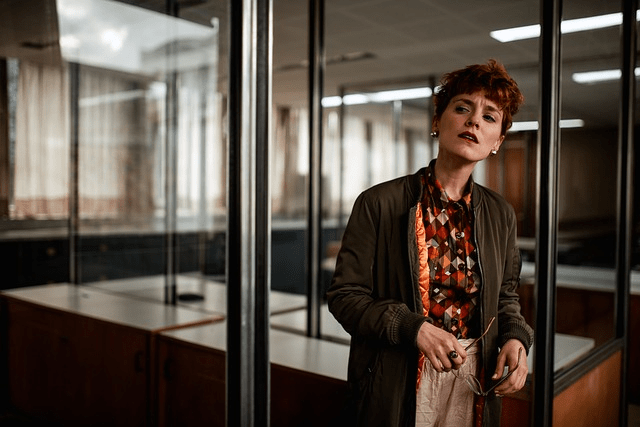Within the world of web design, the design brief stands out as a vital component. It essentially serves as the bridge, connecting a client’s vision with the tangible steps needed to bring it to life. While various individuals, ranging from clients to project managers and stakeholders offer crucial input, it is the Designers who are best suited to spearhead this formation.

In this blog, we will discuss the importance of a well-prepared design brief for successful web projects, and emphasise the roles of each party involved in its creation.
We will cover the following:
- What is a Design Brief?
- Why is a Design Brief Important?
- Who’s Responsible for a Design Brief?
- Collaboration is the Key to a Successful Design Brief
- Taking the Helm: Why Designers Should Always Lead
- Top Tips for Creating an Effective Design Brief
- The Secret to Writing a Good Design Brief
1. What is a Design Brief?
A design brief is a foundational document used in various creative projects to provide a clear and concise overview of the client’s objectives, expectations and vision. It acts as a comprehensive guide for Designers and creative teams, ensuring alignment between the client’s aspirations and the final deliverables.
➡️ The ‘What’, ‘Why’ and ‘How’
At its core, a design brief answers the ‘what’, ‘why’, and ‘how’ of a project. It contains all the details of the project’s scope, targets, constraints, and desired outcomes, offering a roadmap for both the client and the Designer. This document often includes information about the target audience, brand guidelines, budgetary considerations, timelines, and any other specific information relevant to the project.
2. Why is a Design Brief Important?
By setting clear expectations from the onset, a design brief reduces ambiguities, streamlines the creative process, and lays the groundwork for successful collaboration between the client and the creative team.
It ensures the following:
- Clear Communication: A design brief serves as a formalised communication tool between the client and the creative team. It ensures everyone understands the project’s goals, scope, and limitations from the start.
- Sets Expectations: By defining objectives, project deliverables, timelines, and project budget upfront, a design brief establishes clear expectations for both parties, minimising the risk of misunderstandings or unexpected changes later on.
- Guides the Creative Process: For Designers and creative teams, the brief acts as a roadmap. It offers direction and focus for the upcoming design project, ensuring that the creative process aligns with the client’s vision and objectives.
- Efficiency and Productivity: With a clear brief, Designers can avoid unnecessary revisions or changes, saving time and resources. It enables a more streamlined and efficient workflow.
- Foundation for Evaluation: Post-project, the design brief provides a basis for evaluation. By comparing the final deliverable with the objectives set in the brief, clients and Designers can assess the project’s success and areas for improvement.
- Reduces Ambiguity: A well-constructed design brief reduces the chances of ambiguities, project scope or discrepancies. It provides clarity on various aspects, from brand guidelines to target audience specifics.
- Facilitates Collaboration: A design brief fosters a collaborative environment. It opens the door for discussions, feedback, and brainstorming sessions between the client and the creative team, ensuring the end product is both innovative and aligned with the client’s expectations and vision.

3. Who’s Responsible for a Design Brief?
In a web project, the responsibility of a design brief is shared among various stakeholders, but its initiation, creation, and finalisation typically involve a collaborative effort between the client and the Design Team or agency.
Here’s a quick breakdown of the development process:
- Client: The client usually initiates the process by providing fundamental information about their business, goals, target audience, preferences, and any specific requirements or constraints. This information forms the core of the brief, as it communicates the client’s vision and needs.
- Designer or Creative Agency: Even though the client provides the initial details, it is often the Designer or the creative agency’s responsibility to:
- Elaborate and Refine: The Designer will gather more detailed information from the client, asking specific questions to ensure they understand the full scope and nuances of the project.
- Educate the Client: If the client isn’t familiar with certain aspects of web design or has unrealistic expectations, the Designer should be able to guide them towards more feasible solutions.
- Draft the Brief: While some clients might provide a written brief from the start, in many cases, the Designer will draft the brief based on discussions with the client and stakeholders.
- Review and Revise: Once the initial draft is prepared, it should be reviewed collaboratively. The Designer might propose certain changes based on their expertise, and the client can offer further clarifications or modifications.
- Project Manager: In larger agencies or more complex web projects, a Project Manager might be responsible for liaising between the client and the Design Team. They would ensure that the project overview and design brief are comprehensive, clear, and adhered to throughout the project’s lifecycle.
- Other Stakeholders: Depending on the project’s complexity, other stakeholders such as content writers, marketing personnel and Web Developers might also provide input to ensure that the brief covers all aspects of the web project.

In a nutshell, while the client provides the foundational information and the project overview, the Designer or creative agency usually takes the lead in crafting, refining, and finalising the design brief.
4. Collaboration is the Key to a Successful Design Brief
In the world of web design, no entity operates in isolation. By tapping into the strengths of each stakeholder, a design brief becomes inclusive ensuring that everyone is on the same page. While the client brings the idea and vision, the Designers and Developers ensure their feasibility and creative direction, and the Project Managers map the logistical journey.
➡️ Steps for Collaborative Design Briefing
- Initiate Communication: Before even picking up the pen to write a creative brief, it is essential for stakeholders to come together. This foundational meeting serves as the melting pot for sharing ideas, aligning client expectations, and finding mutual understanding.
- Set Clear Goals and Objectives: For collaboration to be effective, everyone should have a unified vision. By defining the end goals at the outset, the creation of the design brief becomes a journey with a clear destination.
- Gather Feedback and Iterate: A design brief shouldn’t be a static document. As it evolves, continuous feedback from all parties ensures its relevance and adaptability. Periodic reviews, facilitated by the leading Designer or agency, ensure the brief remains aligned with the project’s overarching objectives.
➡️ Challenges of Collaborative Briefing
While the collaborative approach paints an ideal picture, it is not without its pitfalls. Differences in perspectives, varying levels of understanding, or misaligned expectations can lead to friction. It is here that the role of the Designer becomes even more critical. As the mediator between vision and execution, they have the responsibility to guide, educate, and sometimes make tough calls to ensure the integrity of the design brief.

5. Taking the Helm: Why Designers Always Should Lead
Every design project is a story waiting to be told, and it requires a capable narrator. Designers and creative agencies, with their unique blend of technical expertise and artistic skills, are perfectly positioned to assume this role. They understand the intricacies of the design process, the importance of aligning aesthetics with functionality, and the challenges that can arise along the way.
By taking the lead in crafting the design brief, they ensure that the project’s vision is achievable and set the tone for a collaborative, informed, and efficient workflow.
➡️ Educating Clients for a Unified Vision
One of the primary responsibilities of Designers in leading the design brief process is educating the client. This doesn’t mean diluting their aspirations or sidelining their ideas. Instead, it is about guiding them through the labyrinth of design possibilities, helping them understand technical limitations, and setting realistic expectations. Through open dialogue and transparent communication, Designers can mould the client’s ideas into a refined, actionable blueprint.
➡️ A Balancing Act: Aspiration vs. Execution
Taking the lead doesn’t imply overshadowing other stakeholders; rather it is about balance. While clients bring their aspirations, Designers must weigh these against practical solutions. This balancing act is a delicate process, requiring tact, insight, and sometimes the courage to make difficult decisions. The design brief is the platform where these dynamics can play out, and it can be crafted to reflect harmony between vision and deliverable.
➡️ Benefits of Designer-led Briefs
- Consistency: With a singular guiding hand, the design brief can maintain a consistent vision, minimising potential conflicts or ambiguities.
- Efficiency: Designers can preempt potential roadblocks, streamlining the process and ensuring that the project remains on track.
- Expertise: Leveraging their deep industry knowledge, Designers can introduce innovative solutions and ideas, enriching the final output.

6. Top Tips for Creating an Effective Design Brief
An effective design brief can make the difference between a smooth design process and a challenging one. Here are some top tips to ensure that your design brief hits the mark every time:
- Clear Objectives: Before you even look at a design brief template, identify the project’s goals. Is it a brand overhaul, a new website, or an advertising campaign? Begin with a clear statement of what needs to be achieved.
- Understand the Audience: Specify the target audience for the project. Who are they? What are their preferences, behaviours, or pain points? Gather as much detail as possible.
- Budget, Timeline, and Deliverables: Before diving into any design brief example, get a clear idea about the budget, timeline, and expected deliverables. This creates a transparent foundation.
- Brand Guidelines: If your client has existing brand guidelines or a style guide, include them in the briefing process. If not, ask them to give you an insight into their brand’s personality, values, and voice.
- Include Inspirations: Sharing examples of designs or campaigns your client admires can also be incredibly helpful. It gives a visual cue about their tastes and preferences.
- Be Open About Dislikes: Just as important as what they like, make sure you ask your client about their dislikes. This can help Designers avoid certain styles or elements right from the start.
- Identify Competitors: Ask your clients about their direct and indirect competitors. This aids Designers in crafting a strategy that differentiates the client’s brand in the marketplace.
- Detail Deliverables: Clearly state the final output – whether it’s wireframes, full designs, printed materials, etc.
- Feedback and Flexibility: Define your feedback mechanism for the development process. And remember, while a design brief can be a great starting point, flexibility is crucial. Projects evolve, and your brief should accommodate that evolution.
- Highlight Challenges: Mention any roadblocks you foresee, be it in design, development, or market competition. A heads-up can lead to proactive solutions.
